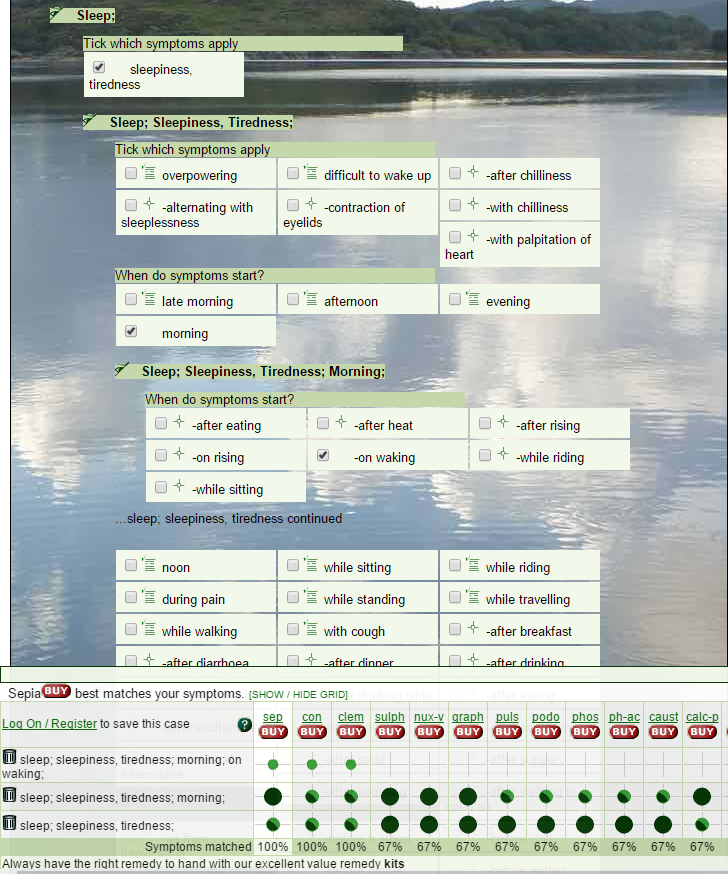Symptoms Information
Among the symptoms, I have stated was sleepiness upon waking up. The sleepiness and tiredness in the morning were not uncommon for me as I am a late sleeper. However, quite recently the sleepy feeling worsened to the point of lethargy, whereupon my morning productivity suffered. The sleepiness would continue until mid-morning, and the coffee was of little help.
Homeopathic Remedy Sepia and Its Effects
Sepia Officinalis (inky juice of cuttlefish) was suggested as the most optimal remedy because it matched all the symptoms that were stated. The remedy is produced from the ink of a cognominal mollusk inhabiting the European seas, especially the Mediterranean. The remedy comes in the form of a diluted solution of the excretory liquid of the said mollusk. The cases and morbidities in which Sepia can be used are numerous, including metrorrhagia, leucorrhoea, constipations, and uterine catarrh. As a sleepiness remedy, it is supposed to have a restorative effect.
I have not taken the medication personally because I was not able to purchase it in the first place. Later, after I have made some enhancements to my sleep routine, improved my diet, and took up meditation, there was no immediate need for its usage. However, an acquaintance of mine has used Sepia when facing the same problem, the only difference being the time and periodicity of sleepiness. My acquaintance felt “sluggish” after noontime and especially after eating.
This person reported taking the medication paired with Guajacum Officinale and Nux Vomica to intensify the effect. They have purchased the medication in the form of pills and took them once a day in the evening. They also used the Guajacol for stiff limbs (2 parts of the solution for 30 parts of Vaseline, locally) and Nux Vomica in the first potency at the same time of the day. My acquaintance spoke highly of the restorative properties of Sepia, pointing out the alleviation of the fatigue and lethargy, clarity of mind, and general optimism.
Research Evidence
There is a limited amount of research evidence to confirm or disprove the qualities of Sepia about sleep. It is known to have been approved by early homeopaths, including Hahnemann himself, and has been consistently used in modern homeopathy as a solution to pre-and postnatal issues in females, and in integration with conventional medicines. Most findings report the usage of Sepia in menopausal women and women with premenstrual and postmenstrual irregularities. Others point out its positive and clinically significant effects on rheumatoid arthritis.
The evidence relevant for the present symptoms emphasizes the efficacy of Sepia when used with conventional sleep-related medicines. For instance, some handbooks for nursing practices state that the assessment of the patients’ needs can help in selecting the homeopathic treatment most appropriate for the symptoms of each patient and most compliant with their expectations. The remedies can be plant- or animal-based; among the latter, sepia is emphasized as being among the most effective (Brooker & Waugh, 2013).
Another notable study suggested a method of recording the patients’ responses to homeopathic medications; among those administered, Sepia was registered as a remedy for sleep-related issues (Mishra et al., 2011). These studies, as well as the word-of-mouth report on the efficacy of Sepia, can speak of the remedy as an optimal solution for sleepiness, although the necessity to maintain a healthy lifestyle cannot be overlooked.
Appendix

References
Brooker, C., & Waugh, A. (2013). Sleep, Rest, and Complementary and Alternative.
Medicine. In C. Brooker & A. Waugh (Eds.), Foundations of Nursing Practice: Fundamentals of Holistic Care (pp. 219-240). London, UK: Elsevier Sciences.
Mishra, N., Muraleedharan, K. C., Paranjpe, A. S., Munta, D. K., Singh, H., & Nayak, C. (2011). An Exploratory Study on Scientific Investigations in Homeopathy Using Medical Analyzer. The Journal of Alternative and Complementary Medicine, 17(8), 705-710.
